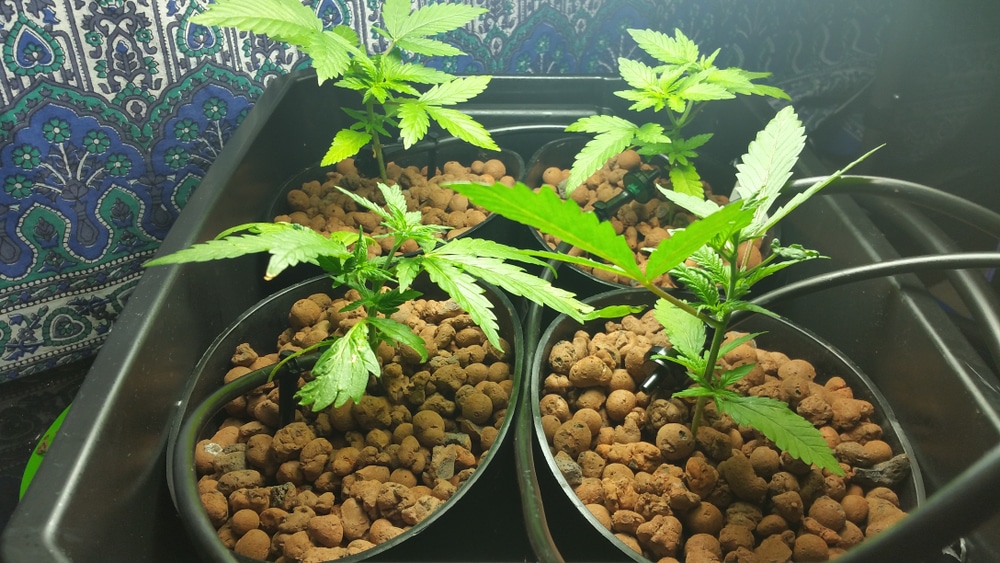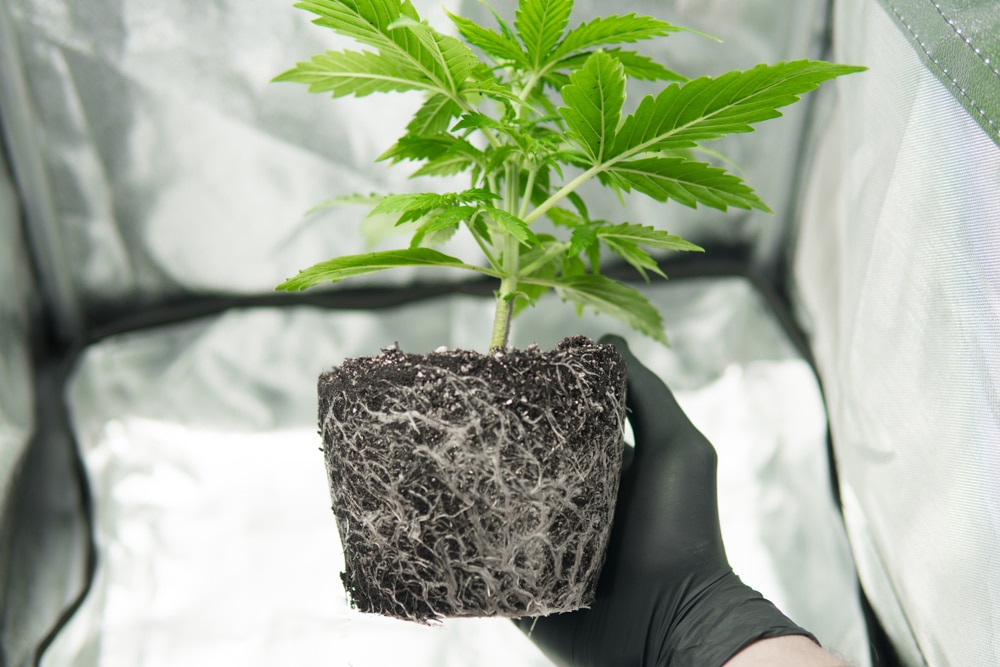No products in the cart.
Marijuana Education
Unraveling The Mystery: Marijuana Seeds Science
Are you curious about marijuana seeds science? Have you ever wondered what makes some strains produce higher yields than others, or why certain growth patterns are preferred for different uses?
Unraveling the mystery of marijuana seed science can provide insight into these questions and more. Understanding the chemical makeup and genetics of marijuana seeds is crucial for optimizing their growth and potential uses.
By delving deeper into the science behind these tiny but powerful seeds, we can uncover new ways to cultivate them for medicinal or recreational purposes. From analyzing various strains to experimenting with growth conditions, there is much to discover in the world of marijuana seed science.
So let’s dive in and explore this fascinating topic together!
Key Takeaways
- The chemical makeup of marijuana seeds, including cannabinoids and terpenes, determines their effects on the body and interacts with the endocannabinoid system.
- Understanding the genetics and growth patterns of marijuana seeds is crucial for successful cultivation and strain development, but genetic modification and patenting can limit access and perpetuate corporate domination.
- Marijuana seeds have potential for new discoveries and innovations, offering high levels of essential fatty acids and therapeutic compounds, and could provide a sustainable alternative to fish oil and flaxseed.
- Legalizing and regulating the industry can create a new market, reduce violent crimes, and generate tax revenue, with implications for various industries including healthcare and agriculture.
Chemical Makeup of Marijuana Seeds
The chemical makeup of marijuana seeds is what determines their effects on the body. Marijuana seeds contain a variety of active compounds, including cannabinoids and terpenes. These compounds interact with the body’s endocannabinoid system, producing a range of effects such as pain relief, relaxation, and euphoria.
Cannabis seeds are particularly rich in two main cannabinoids: THC (tetrahydrocannabinol) and CBD (cannabidiol). THC is responsible for the psychoactive effects associated with marijuana use, while CBD has been shown to have potential therapeutic benefits such as reducing inflammation and anxiety.
Additionally, terpenes contribute to the flavor and aroma of different strains of marijuana seeds while also having potential medicinal properties. Understanding the chemical makeup of marijuana seeds is crucial for developing effective medical treatments and improving our understanding of how these plants affect the human body.
Genetics of Marijuana Seeds
As you delve deeper into the fascinating world of marijuana seeds, you’ll soon discover the importance of genetics. Varieties and strains are determined by the unique genetic makeup of each individual seed.
Breeding and hybridization are key processes for creating new strains that possess specific characteristics such as potency, flavor, and aroma. Understanding the genetics behind marijuana seeds is crucial for any serious grower or breeder looking to produce high-quality cannabis plants.
Varieties and Strains
It’s fascinating how different varieties and strains of marijuana can evoke such distinct reactions in people. The chemical composition of each strain is unique, with varying levels of THC, CBD, and other cannabinoids that contribute to their effects.
Some strains are known for inducing feelings of euphoria and relaxation, while others may increase focus or creativity. There are hundreds of strains available on the market today, each with its own set of characteristics.
Sativa strains tend to produce a more cerebral high that can be energizing and uplifting, while indica strains typically induce a more physical sedative effect. Hybrid strains combine the best qualities of both sativa and indica plants.
Additionally, there are ruderalis strains which have lower levels of THC but higher amounts of CBD, making them popular for medicinal use. Understanding the differences between these varieties can help individuals choose the best strain for their desired effects or medical needs.
Breeding and Hybridization
To better understand the effects of different strains, you’ll want to explore how breeders have been able to create hybrid plants with unique characteristics. Breeding is the process of crossing two genetically distinct plants in order to produce offspring that exhibit desirable traits from both parents. Hybridization takes this a step further by continuing to breed these offspring with other hybrids or purebred plants, resulting in even more diverse and complex genetics.
Breeding and hybridization are essential components of the marijuana industry as they allow for the creation of new strains with specific qualities such as increased potency, higher yields, and resistance to pests or diseases. However, there are also ethical concerns surrounding these practices such as genetic modification and patenting of plant varieties.
Here are five points of dispute about breeding:
- The intentional breeding of marijuana plants has led to an incredible diversity of strains but raises questions about ownership and control over nature.
- Hybridization can result in unpredictable outcomes which may not always be beneficial or desirable.
- Some argue that genetic modification is necessary for sustainability and increased efficiency while others worry about its potential negative consequences on human health and the environment.
- Patents on plant varieties limit access for small-scale growers and perpetuate corporate domination within the industry.
- As consumers, it’s important to consider where our products come from and who benefits from their production.
Growth Patterns of Marijuana Seeds
Marijuana seeds start their journey by pushing through the soil, stretching their tiny roots towards the earth’s core as they begin to establish their growth patterns. These growth patterns are determined by a combination of genetic and environmental factors.
The first two leaves that emerge from the seed are called cotyledons, which provide nutrients for the plant until it can produce its own food through photosynthesis. As the plant grows, it will develop nodes where leaves and branches will grow outwards.
The height of a marijuana plant is influenced by various factors such as genetics, growing conditions, and pruning techniques. Sativa strains tend to grow taller than Indica strains due to their genetic makeup. Additionally, plants grown outdoors in natural sunlight tend to be taller than those grown indoors under artificial lighting. Pruning techniques such as topping or fimming can also influence the height and shape of a marijuana plant.
Understanding these growth patterns is crucial for successful cultivation of marijuana plants.
Optimization for Different Uses
Now that you’ve successfully grown your marijuana seeds, it’s time to optimize their use for different applications.
Medical and recreational uses are the most common reasons for growing marijuana, and optimizing the plant for these purposes requires careful consideration of its chemical composition.
Additionally, industrial and agricultural uses of marijuana are gaining traction as more people recognize its potential as a sustainable resource.
By understanding how to optimize your plants for different uses, you can ensure that you’re getting the most out of your seeds that produce buds.
Medical and Recreational Applications
You might be interested to know that in Colorado, where recreational marijuana is legal, the state made over $1 billion in sales revenue from both medical and recreational applications combined.
Medical marijuana has been shown to have numerous benefits, including pain relief, reducing inflammation, and alleviating symptoms of anxiety and depression. It’s also used to treat conditions such as epilepsy and multiple sclerosis.
Recreational use of marijuana is becoming more widely accepted across the United States, with many states legalizing it for personal use. The effects of THC (tetrahydrocannabinol), the main psychoactive component in marijuana, can result in feelings of euphoria and relaxation.
However, it’s important to note that there are potential negative side effects associated with its use as well, such as impaired coordination and memory function. Understanding the science behind marijuana’s effects on the body is crucial for both medical and recreational users alike.
Industrial and Agricultural Uses
With its strong fibers and versatile applications, it’s no wonder that hemp has been used for centuries in various industries, from textiles to construction. Hemp seeds offer a wealth of benefits as well. They are rich in protein, healthy fats, and minerals such as magnesium and zinc. In addition to being used as a food source for both humans and animals, hemp seeds can also be pressed for oil which is utilized in many industrial applications.
The table below highlights some of the main uses of industrial hemp:
| Industry | Application | Benefits |
| Textile | Clothing, rope, twine | Durable fibers that resist wear and tear |
| Construction | Concrete reinforcement, insulation | Lightweight material with high strength-to-weight ratio |
| Automotive | Auto parts, bioplastics | Sustainable alternative to traditional petroleum-based plastics |
As research on industrial hemp continues to grow, so too do its potential uses. From biofuels to paper products to even building materials like bricks made from hempcrete—this versatile plant offers endless possibilities. As society becomes more environmentally conscious and seeks out sustainable solutions for everyday products, it’s likely that we will see even more innovative uses for this ancient crop in the years to come.

Future of Marijuana Seed Science
As you look to the future of marijuana seed science, there’s enormous potential for new discoveries and innovations.
Advances in genetic sequencing and plant breeding techniques are already leading to exciting breakthroughs in strain development and quality control.
As legalization and regulation continue to evolve, these advancements will have important implications for both growers and consumers alike.
Potential for New Discoveries and Innovations
Researchers are delving deeper into the potential of marijuana seeds, unearthing new discoveries and innovations that could revolutionize various industries.
Recent studies have shown that marijuana seeds contain high levels of essential fatty acids, such as omega-3 and omega-6, which are crucial for maintaining good health. These fatty acids are also found in fish oil and flaxseed, but marijuana seeds offer a more sustainable alternative to these products.
Moreover, researchers have discovered that certain compounds in cannabis seeds may have therapeutic properties. For instance, cannabidiol (CBD) has been shown to help relieve pain and reduce inflammation. This finding has led to the development of CBD-based products such as oils and capsules that can be used to treat various medical conditions including epilepsy, anxiety disorders, and chronic pain.
With continued research into the potential benefits of marijuana seeds, we can expect even more breakthroughs in this field in the near future.
Implications for Legalization and Regulation
You may be surprised to learn about the potential implications for legalization and regulation of this versatile plant. With more research being conducted on marijuana seeds, it is becoming increasingly clear that there are numerous benefits to legalizing and regulating the industry. For starters, it could create a new market for farmers who can grow marijuana seeds with high CBD content, which has been shown to have significant health benefits.
Legalization could also help reduce crime associated with the black market for marijuana. By regulating sales and production, authorities would have greater control over where the product goes and who sells it. This could lead to a decrease in violent crimes related to drug trafficking and other illegal activities. Additionally, legalizing marijuana seeds could potentially generate tax revenue for governments around the world.
To help you better understand the potential implications of legalization and regulation of marijuana seeds, take a look at this table:
| Benefit | Explanation |
| New market opportunities | Farmers can grow high-CBD cannabis strains that offer health benefits |
| Reduces crime | Regulation can reduce violent crimes related to drug trafficking |
| Tax revenue generation | Legalizing cannabis seeds can generate tax revenue for governments |
As more studies are conducted on marijuana seeds science, we will likely discover even more reasons why legalization is beneficial. The key is finding a way to balance concerns around public safety with economic opportunities presented by cannabis seed production and sale.
Frequently Asked Questions
What are the legal implications of growing marijuana seeds?
Growing marijuana seeds can have legal implications, as possession and cultivation laws vary by state and country. In the US, federal law prohibits marijuana cultivation, but some states allow it for medical or recreational use.
How do you properly store marijuana seeds for long-term use?
To store marijuana seeds long-term, keep them in a cool, dark place with low humidity levels and no exposure to light or air. Use an airtight container like a glass jar or plastic bag with a desiccant packet to absorb any moisture. Check on the seeds periodically for mold or damage.
Can you tell the sex of a marijuana plant from its seeds?
You cannot determine the sex of a marijuana plant from its seeds. However, there are techniques such as genetic testing and observation of the plant’s growth and physical characteristics that can help identify its gender.
How do different strains of marijuana seeds vary in terms of potency and effects?
You may have heard that different strains of marijuana seeds vary in potency and effects. This theory is true, as the chemical composition of each strain determines its unique characteristics. Factors such as THC and CBD levels, terpene profiles, and genetics all play a role in determining a strain’s effects on the body and mind. Understanding these differences can help you choose the right strain for your needs.
What is the environmental impact of growing large quantities of marijuana seeds?
Growing large quantities of marijuana seeds can have a significant environmental impact, including increased energy usage and water consumption. This can lead to soil degradation, pollution from fertilizers and pesticides, and potential harm to wildlife.
Conclusion
Congratulations! You’ve unlocked the secrets of marijuana seed science. These seeds hold many possibilities for growth patterns and optimization for different uses, with their complex chemical makeup and diverse genetics.
But don’t stop here. The future of marijuana seed science is just beginning. As we continue to unravel the mystery of these tiny powerhouses, who knows what new discoveries await us?
Keep exploring the world of cannabis cultivation and pushing the boundaries of what we know about this amazing plant. The sky’s the limit when it comes to understanding the science behind marijuana seeds.
So go forth with your newfound knowledge and see where it takes you!






